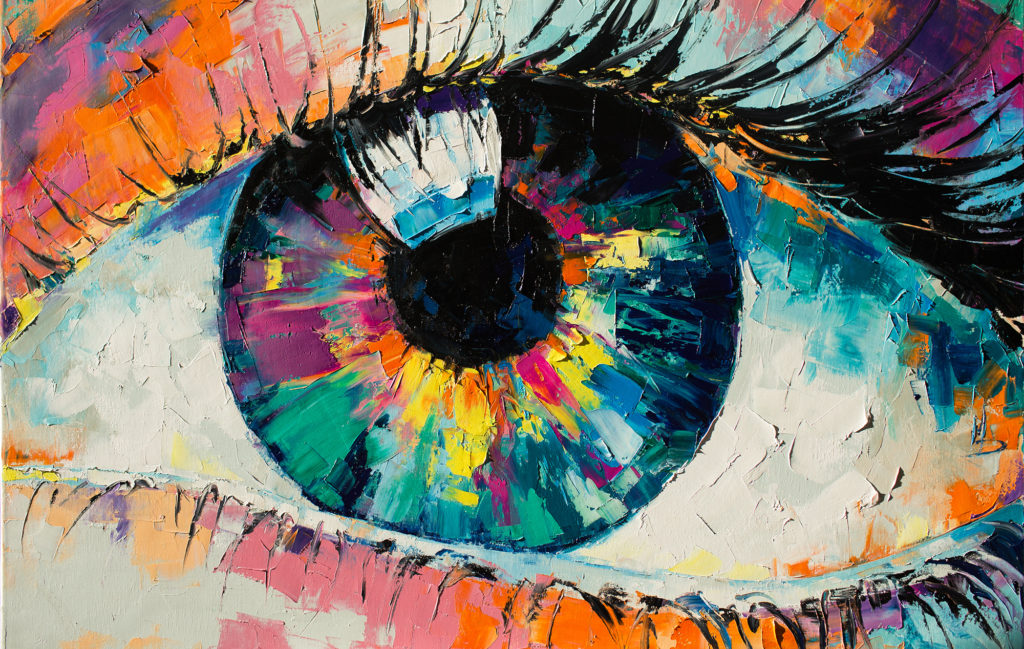Exactly How Trump Art Reflects Modern Political Satire in the Painting World
Exactly How Trump Art Reflects Modern Political Satire in the Painting World
Blog Article
Exploring the Diverse World of Artistic Expression: From Surrealism to Abstract Realism
In the world of artistic expression, from the dreamlike landscapes of surrealism to the elaborate play of light and type in abstract realistic look, musicians have actually constantly pushed the boundaries of creative thinking and creative imagination. As we explore the diverse world of art, we are offered with a tapestry of styles, methods, and viewpoints that challenge our understanding and prompt consideration.
Surrealism: Letting Loose the Subconscious
Surrealism, a progressive artistic activity of the 20th century, looked into the depths of the subconscious, revealing a globe of dream-like imagery and unique juxtapositions. Headed by musicians like Salvador Dali, René Magritte, and Joan Miró, Surrealism sought to challenge the standard means of seeing and understanding art. With strategies such as automatism and dream evaluation, Surrealist artists aimed to take advantage of the subconscious mind to disclose hidden facts and desires.
Among the key elements of Surrealism was the emphasis on the illogical and the extraordinary. By integrating unanticipated components in their jobs, Surrealist artists aimed to develop a feeling of disorientation and surprise in the viewer. This disturbance of logic and reason was meant to provoke a deeper expedition of the subconscious and the enigmas of the human mind.
Abstract Realism: Redefining Perception
Challenging standard imaginative borders, Abstract Realism redefines understanding via the fusion of well-known aspects with abstract kinds. This ingenious technique to art incorporates the representational precision of realism with the innovative freedom of abstraction, supplying visitors a special aesthetic experience that prompts them to examine their perception of reality.
In Abstract Realistic look, artists aim to catch the essence of their subjects while additionally instilling their deal with a feeling of depth and complexity with abstract elements. By blending the acquainted with the unfamiliar, these artists welcome audiences to engage with their pieces on multiple degrees, encouraging them to explore the subtleties of kind, color, and texture.

Cubism: Fragmenting Reality
Making use of geometric kinds and fragmented viewpoints, Cubism revolutionized the artistic depiction of truth in the very early 20th century. Established by Pablo Picasso and Georges Braque, Cubism sought to challenge conventional concepts of perspective and depiction. By breaking down things and figures into geometric forms and providing them from numerous point of views all at once, Cubist artists aimed to capture the significance of the subject instead of its actual look. This strategy not just deconstructed truth but likewise stressed the flatness of the canvas, leading the way for future abstract art activities.

Cubism can be categorized into 2 main phases: Analytical Cubism, defined by single shade link schemes and intricate, fragmented types; and Synthetic Cubism, which incorporated collection elements and brighter shades into the compositions. Via these distinctive phases, Cubism affected not only painting however likewise style, architecture, and sculpture. trump art. Its influence reverberated throughout the art globe, motivating musicians to check out new means of representing the globe and translating around them
Expressionism: Feelings on Canvas
Checking out the depths of human emotions through brilliant and meaningful brushstrokes, Expressionism became an extensive imaginative motion in the early 20th century. Unlike previous art activities that concentrated on portraying the exterior globe, Expressionism dove into the internal world of the artist's mind, aiming to stimulate raw feelings and provoke natural responses from visitors.
Expressionist artists, such as Edvard Munch, Egon Schiele, and Emil Nolde, turned down typical ideas of beauty and realistic look for distorting form and shade to communicate subjective feelings. Using exaggerated brushwork, strong colors, and distorted numbers assisted develop a sense of anxiousness, alienation, or interest in their works.
One of the most renowned instances of Expressionism is Munch's "The Scream," which catches the intense anxiety and misery of modern life with its swirling, distorted number versus a blood-red skies. Through their psychologically billed jobs, Expressionist musicians sought to test conventional artistic standards and offer a window right into the turbulent depths of the human description soul.
Contemporary Art: Developing Viewpoints

Among the defining qualities of contemporary art is its consistent advancement and capability to adapt to altering cultural landscapes. Artists are significantly including modern technology into their technique, blurring the lines between the electronic and physical worlds. This fusion of mediums permits innovative methods of storytelling and involving with target markets in a much more interactive manner.
Furthermore, contemporary art frequently acts as a platform for social discourse, resolving pushing issues such as identity, national politics, and the environment. Musicians are using their work to trigger important conversations and provoke thought, shedding light on the intricacies of the globe we live in. As viewpoints remain to evolve, contemporary art stays a significant and vibrant force in forming our cultural landscape.
Conclusion
To conclude, the world trump art of creative expression incorporates a vast array of motions and designs, each with its very own special method to conveying meaning and feeling. From surrealism's expedition of the subconscious to abstract realistic look's redefining of perception, and from cubism's fragmentation of reality to expressionism's representation of emotions, art continues to advance and challenge viewpoints - trump art. Contemporary art reflects the ever-changing world we live in, offering new means to translate and understand the intricacies of our truth
As we check out the complex world of art, we are offered with a tapestry of styles, techniques, and approaches that test our understanding and prompt consideration. Its impact reverberated throughout the art globe, motivating musicians to check out new ways of representing the globe and interpreting around them.

Report this page